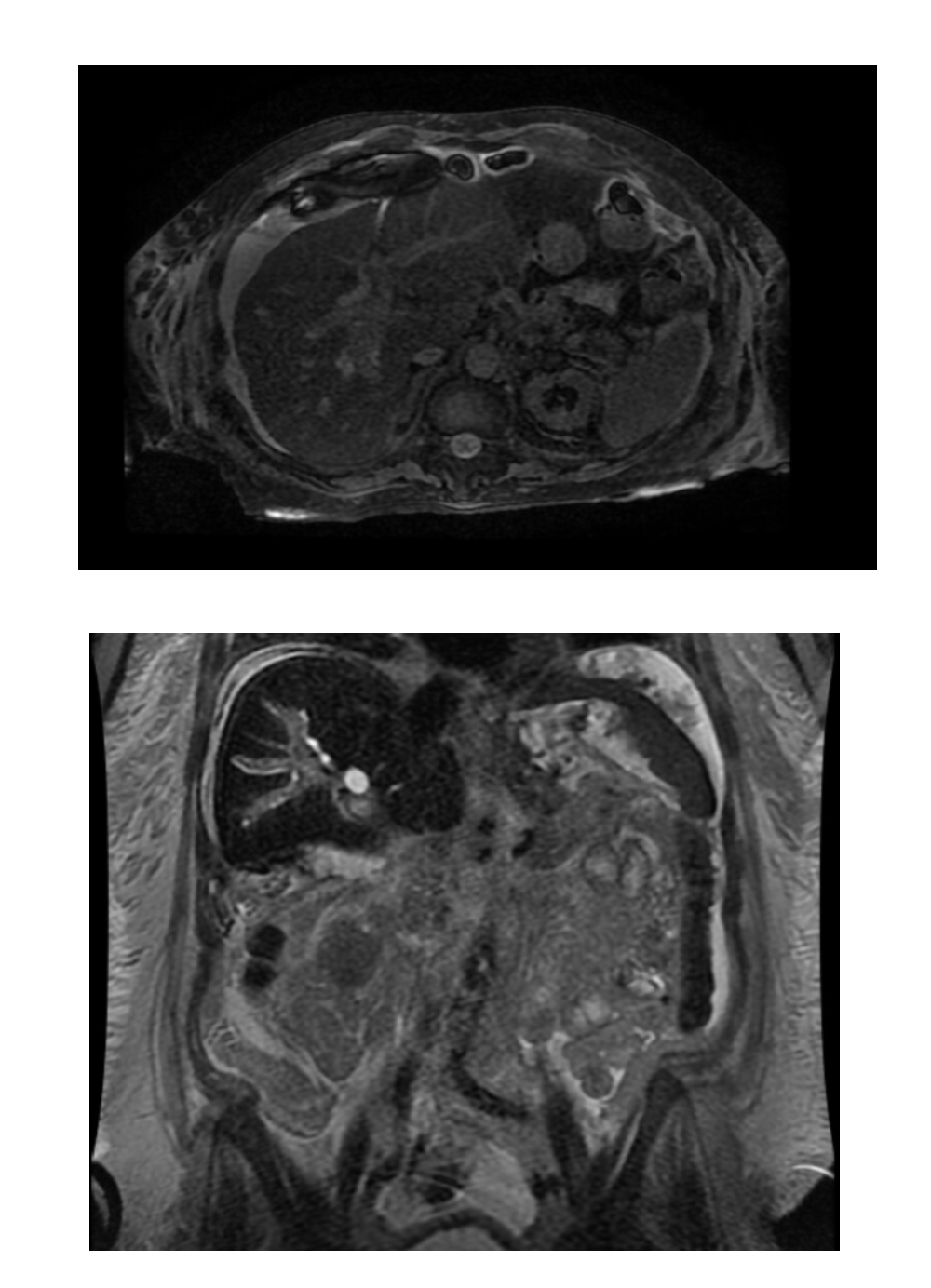Tuesday Poster Session
Category: Liver
P4848 - A Rare Encounter: Desulfovibrio fairfieldensis-Induced Pylephlebitis in a Post-Roux-en-Y Bypass Patient
Tuesday, October 29, 2024
10:30 AM - 4:00 PM ET
Location: Exhibit Hall E

Has Audio

Saadia Jabbar, MD
Franciscan Health Olympia Fields
Homewood, IL
Presenting Author(s)
Saadia Jabbar, MD1, Saria Adnan Sultan, DO2, Faizan Khan, MD2, Ashrif Al-Ghanoudi, MD2
1Franciscan Health Olympia Fields, Homewood, IL; 2Franciscan Health Olympia Fields, Chicago, IL
Introduction: Pylephlebitis, or septic portal vein thrombosis (PVT), is a rare but life-threatening condition marked by infected clots in the portal vein and its branches. The incidence of this condition is around 2.7 cases per 100,000 people per year. It usually stems from intra-abdominal inflammatory and infectious processes, and its rarity often leads to late diagnosis. In our case the patient presented with a polymicrobial bacteremia in which one of the isolates was Desulfovibrio fairfieldensis. This species only has a few reported cases of bacteremia. Our case highlights how a patient through bacterial translocation precipitated in the setting of their altered gastrointestinal anatomy due to bypass surgery was the underlying factor in causing PVT leading to unresolved sepsis.
Case Description/Methods: A 63-year-old male with a history of end-stage renal disease on hemodialysis and gastric bypass with revisions presented with abdominal pain. Initial vital signs indicated fever (101.3°F), and laboratory findings showed leukocytosis. He was diagnosed with Streptococcus intermedius bacteremia and had presence of a new systolic murmur raising concerns for infective endocarditis. Patients transesophageal echocardiogram was negative, he also had a negative tagged WBC scan, along with negative lumbar imaging for occult abscess. Despite negative studies he continued to spike fevers. Repeat blood cultures grew Desulfovibrio fairfieldensis. Given elevated liver enzymes, the patient had a right upper quadrant ultrasound which showed PVT. He underwent MRCP which confirmed extensive thrombus within the portal vein system.
Discussion: This case of pylephlebitis reveals the critical role of timely diagnosis in rare severe infections. The identification of Desulfovibrio fairfieldensis, a gram-negative anaerobe found in the human gut, is not a typical causative pathogen for intra-abdominal infection. The patient's history of multiple gastric surgeries likely facilitated this infection by altering the gut flora and compromising mucosal integrity. The persistence of fever and bacteremia despite standard treatment required advanced imaging to pinpoint the pathogen. This case introduces a novel association of Desulfovibrio fairfieldensis with pylephlebitis, enriching medical literature on its pathogenic potential. This case shows how patients with anatomically altering abdominal surgeries carry a higher risk of infection from normal gut flora that should prompt further imaging exploration to localize the source of sepsis.

Disclosures:
Saadia Jabbar, MD1, Saria Adnan Sultan, DO2, Faizan Khan, MD2, Ashrif Al-Ghanoudi, MD2. P4848 - A Rare Encounter: <i>Desulfovibrio fairfieldensis</i>-Induced Pylephlebitis in a Post-Roux-en-Y Bypass Patient, ACG 2024 Annual Scientific Meeting Abstracts. Philadelphia, PA: American College of Gastroenterology.
1Franciscan Health Olympia Fields, Homewood, IL; 2Franciscan Health Olympia Fields, Chicago, IL
Introduction: Pylephlebitis, or septic portal vein thrombosis (PVT), is a rare but life-threatening condition marked by infected clots in the portal vein and its branches. The incidence of this condition is around 2.7 cases per 100,000 people per year. It usually stems from intra-abdominal inflammatory and infectious processes, and its rarity often leads to late diagnosis. In our case the patient presented with a polymicrobial bacteremia in which one of the isolates was Desulfovibrio fairfieldensis. This species only has a few reported cases of bacteremia. Our case highlights how a patient through bacterial translocation precipitated in the setting of their altered gastrointestinal anatomy due to bypass surgery was the underlying factor in causing PVT leading to unresolved sepsis.
Case Description/Methods: A 63-year-old male with a history of end-stage renal disease on hemodialysis and gastric bypass with revisions presented with abdominal pain. Initial vital signs indicated fever (101.3°F), and laboratory findings showed leukocytosis. He was diagnosed with Streptococcus intermedius bacteremia and had presence of a new systolic murmur raising concerns for infective endocarditis. Patients transesophageal echocardiogram was negative, he also had a negative tagged WBC scan, along with negative lumbar imaging for occult abscess. Despite negative studies he continued to spike fevers. Repeat blood cultures grew Desulfovibrio fairfieldensis. Given elevated liver enzymes, the patient had a right upper quadrant ultrasound which showed PVT. He underwent MRCP which confirmed extensive thrombus within the portal vein system.
Discussion: This case of pylephlebitis reveals the critical role of timely diagnosis in rare severe infections. The identification of Desulfovibrio fairfieldensis, a gram-negative anaerobe found in the human gut, is not a typical causative pathogen for intra-abdominal infection. The patient's history of multiple gastric surgeries likely facilitated this infection by altering the gut flora and compromising mucosal integrity. The persistence of fever and bacteremia despite standard treatment required advanced imaging to pinpoint the pathogen. This case introduces a novel association of Desulfovibrio fairfieldensis with pylephlebitis, enriching medical literature on its pathogenic potential. This case shows how patients with anatomically altering abdominal surgeries carry a higher risk of infection from normal gut flora that should prompt further imaging exploration to localize the source of sepsis.

Figure: Figure 1. Extensive Portal Vein Thrombosis as seen on MRCP
Disclosures:
Saadia Jabbar indicated no relevant financial relationships.
Saria Adnan Sultan indicated no relevant financial relationships.
Faizan Khan indicated no relevant financial relationships.
Ashrif Al-Ghanoudi indicated no relevant financial relationships.
Saadia Jabbar, MD1, Saria Adnan Sultan, DO2, Faizan Khan, MD2, Ashrif Al-Ghanoudi, MD2. P4848 - A Rare Encounter: <i>Desulfovibrio fairfieldensis</i>-Induced Pylephlebitis in a Post-Roux-en-Y Bypass Patient, ACG 2024 Annual Scientific Meeting Abstracts. Philadelphia, PA: American College of Gastroenterology.
